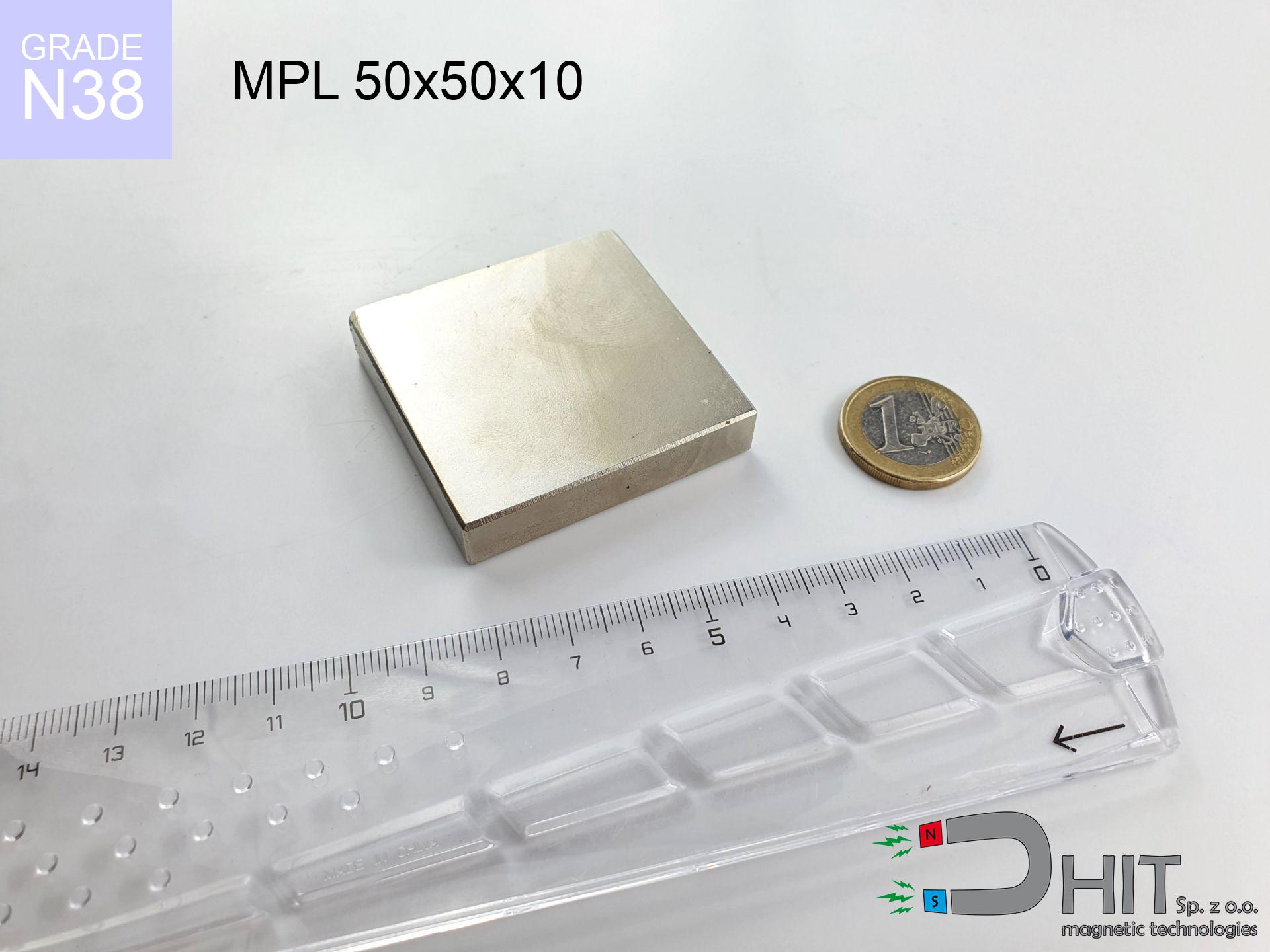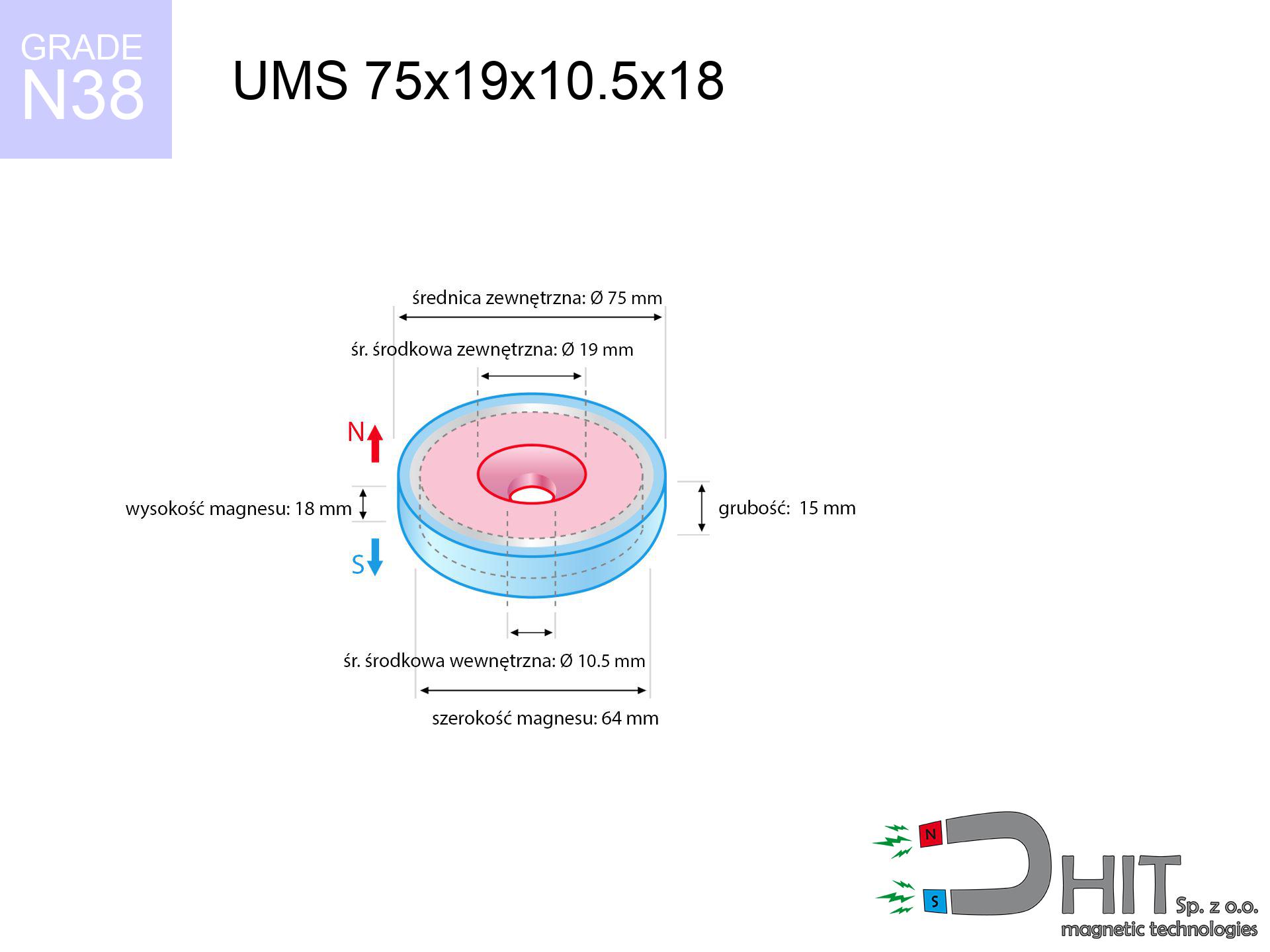SM 32x125 [2xM8] / N42 - magnetic separator
magnetic separator
Catalog no 130352
GTIN: 5906301813002
Diameter Ø
32 mm [±1 mm]
Height
125 mm [±1 mm]
Weight
670 g
Magnetic Flux
~ 8 000 Gauss [±5%]
381.30 ZŁ with VAT / pcs + price for transport
310.00 ZŁ net + 23% VAT / pcs
bulk discounts:
Need more?Need help making a decision?
Call us now
+48 888 99 98 98
otherwise contact us by means of
contact form
through our site.
Strength along with structure of magnetic components can be analyzed with our
online calculation tool.
Order by 14:00 and we’ll ship today!
SM 32x125 [2xM8] / N42 - magnetic separator
Specification / characteristics SM 32x125 [2xM8] / N42 - magnetic separator
| properties | values |
|---|---|
| Cat. no. | 130352 |
| GTIN | 5906301813002 |
| Production/Distribution | Dhit sp. z o.o. |
| Country of origin | Poland / China / Germany |
| Customs code | 85059029 |
| Diameter Ø | 32 mm [±1 mm] |
| Height | 125 mm [±1 mm] |
| Weight | 670 g |
| Material Type | Stainless steel AISI 304 / A2 |
| Magnetic Flux | ~ 8 000 Gauss [±5%] |
| Size/Mount Quantity | 2xM8 |
| Polarity | circumferential - 4 poles |
| Casing Tube Thickness | 1 mm |
| Manufacturing Tolerance | ±1 mm |
Magnetic properties of material N42
| properties | values | units |
|---|---|---|
| remenance Br [Min. - Max.] ? | 12.9-13.2 | kGs |
| remenance Br [Min. - Max.] ? | 1290-1320 | T |
| coercivity bHc ? | 10.8-12.0 | kOe |
| coercivity bHc ? | 860-955 | kA/m |
| actual internal force iHc | ≥ 12 | kOe |
| actual internal force iHc | ≥ 955 | kA/m |
| energy density [Min. - Max.] ? | 40-42 | BH max MGOe |
| energy density [Min. - Max.] ? | 318-334 | BH max KJ/m |
| max. temperature ? | ≤ 80 | °C |
Physical properties of sintered neodymium magnets Nd2Fe14B at 20°C
| properties | values | units |
|---|---|---|
| Vickers hardness | ≥550 | Hv |
| Density | ≥7.4 | g/cm3 |
| Curie Temperature TC | 312 - 380 | °C |
| Curie Temperature TF | 593 - 716 | °F |
| Specific resistance | 150 | μΩ⋅Cm |
| Bending strength | 250 | Mpa |
| Compressive strength | 1000~1100 | Mpa |
| Thermal expansion parallel (∥) to orientation (M) | (3-4) x 106 | °C-1 |
| Thermal expansion perpendicular (⊥) to orientation (M) | -(1-3) x 10-6 | °C-1 |
| Young's modulus | 1.7 x 104 | kg/mm² |
Jak rozdzielać?
Nie próbuj odrywać magnesów siłą!
Zawsze zsuwaj je na bok krawędzi stołu.
Elektronika
Trzymaj z dala od dysków HDD, kart płatniczych i telefonów.
Rozruszniki Serca
Osoby z rozrusznikiem muszą zachować dystans min. 10 cm.
Nie dla dzieci
Ryzyko połknięcia. Połknięcie dwóch magnesów grozi śmiercią.
Kruchy materiał
Magnes to ceramika! Uderzenie o inny magnes spowoduje odpryski.
Do czego użyć tego magnesu?
Sprawdzone zastosowania dla wymiaru 15x10x2 mm
Elektronika i Czujniki
Idealny jako element wyzwalający dla czujników Halla oraz kontaktronów w systemach alarmowych. Płaski kształt (2mm) pozwala na ukrycie go w wąskich szczelinach obudowy.
Modelarstwo i Druk 3D
Stosowany do tworzenia niewidocznych zamknięć w modelach drukowanych 3D. Można go wprasować w wydruk lub wkleić w kieszeń zaprojektowaną w modelu CAD.
Meble i Fronty
Używany jako "domykacz" lekkich drzwiczek szafkowych, gdzie standardowe magnesy meblowe są za grube. Wymaga wklejenia w płytkie podfrezowanie.
Other products
Pros as well as cons of rare earth magnets.
Besides their stability, neodymium magnets are valued for these benefits:
- They virtually do not lose strength, because even after 10 years the decline in efficiency is only ~1% (according to literature),
- They show high resistance to demagnetization induced by external magnetic fields,
- A magnet with a shiny silver surface has an effective appearance,
- Magnetic induction on the surface of the magnet turns out to be extremely intense,
- Neodymium magnets are characterized by extremely high magnetic induction on the magnet surface and are able to act (depending on the shape) even at a temperature of 230°C or more...
- Thanks to freedom in shaping and the ability to customize to specific needs,
- Versatile presence in modern technologies – they serve a role in HDD drives, electric drive systems, medical equipment, and other advanced devices.
- Thanks to their power density, small magnets offer high operating force, occupying minimum space,
Drawbacks and weaknesses of neodymium magnets and proposals for their use:
- To avoid cracks upon strong impacts, we suggest using special steel holders. Such a solution secures the magnet and simultaneously increases its durability.
- NdFeB magnets lose strength when exposed to high temperatures. After reaching 80°C, many of them experience permanent weakening of power (a factor is the shape and dimensions of the magnet). We offer magnets specially adapted to work at temperatures up to 230°C marked [AH], which are extremely resistant to heat
- When exposed to humidity, magnets usually rust. For applications outside, it is recommended to use protective magnets, such as those in rubber or plastics, which secure oxidation and corrosion.
- Limited ability of making threads in the magnet and complex forms - preferred is a housing - mounting mechanism.
- Possible danger resulting from small fragments of magnets pose a threat, in case of ingestion, which becomes key in the aspect of protecting the youngest. It is also worth noting that small components of these products can disrupt the diagnostic process medical in case of swallowing.
- With large orders the cost of neodymium magnets is economically unviable,
Best holding force of the magnet in ideal parameters – what contributes to it?
Information about lifting capacity is the result of a measurement for ideal contact conditions, taking into account:
- using a base made of low-carbon steel, functioning as a magnetic yoke
- with a cross-section no less than 10 mm
- with an polished contact surface
- without the slightest insulating layer between the magnet and steel
- during detachment in a direction vertical to the mounting surface
- in neutral thermal conditions
Practical lifting capacity: influencing factors
Please note that the magnet holding may be lower influenced by the following factors, starting with the most relevant:
- Space between surfaces – every millimeter of separation (caused e.g. by veneer or dirt) diminishes the magnet efficiency, often by half at just 0.5 mm.
- Direction of force – highest force is reached only during pulling at a 90° angle. The force required to slide of the magnet along the plate is standardly several times lower (approx. 1/5 of the lifting capacity).
- Wall thickness – thin material does not allow full use of the magnet. Part of the magnetic field passes through the material instead of generating force.
- Material type – ideal substrate is high-permeability steel. Stainless steels may attract less.
- Plate texture – ground elements ensure maximum contact, which improves field saturation. Uneven metal reduce efficiency.
- Temperature influence – high temperature weakens pulling force. Exceeding the limit temperature can permanently damage the magnet.
* Lifting capacity was assessed with the use of a polished steel plate of optimal thickness (min. 20 mm), under vertically applied force, whereas under shearing force the lifting capacity is smaller. Additionally, even a minimal clearance {between} the magnet’s surface and the plate decreases the lifting capacity.
Warnings
ICD Warning
Medical warning: Neodymium magnets can turn off pacemakers and defibrillators. Stay away if you have electronic implants.
Serious injuries
Mind your fingers. Two powerful magnets will snap together immediately with a force of several hundred kilograms, destroying anything in their path. Be careful!
Fire risk
Fire warning: Neodymium dust is explosive. Do not process magnets without safety gear as this risks ignition.
Heat warning
Standard neodymium magnets (N-type) undergo demagnetization when the temperature surpasses 80°C. The loss of strength is permanent.
Conscious usage
Before use, read the rules. Uncontrolled attraction can destroy the magnet or hurt your hand. Be predictive.
Data carriers
Do not bring magnets close to a wallet, laptop, or screen. The magnetism can irreversibly ruin these devices and erase data from cards.
Nickel coating and allergies
Some people have a sensitization to Ni, which is the typical protective layer for neodymium magnets. Prolonged contact might lead to an allergic reaction. We strongly advise use protective gloves.
Protective goggles
Despite the nickel coating, neodymium is brittle and cannot withstand shocks. Do not hit, as the magnet may crumble into sharp, dangerous pieces.
Threat to navigation
Be aware: neodymium magnets produce a field that interferes with precision electronics. Keep a safe distance from your mobile, device, and navigation systems.
Product not for children
These products are not toys. Accidental ingestion of several magnets can lead to them pinching intestinal walls, which constitutes a severe health hazard and requires immediate surgery.
Security!
Learn more about hazards in the article: Magnet Safety Guide.

![Separation magnetic rod SM 32x125 [2xM8] / N42 Separation magnetic rod SM 32x125 [2xM8] / N42](https://cdn3.dhit.pl/graphics/banners/magnet.webp)
![SM 32x125 [2xM8] / N42 - magnetic separator](https://cdn3.dhit.pl/graphics/products/sm-32x125-2xm8-pul.jpg)





